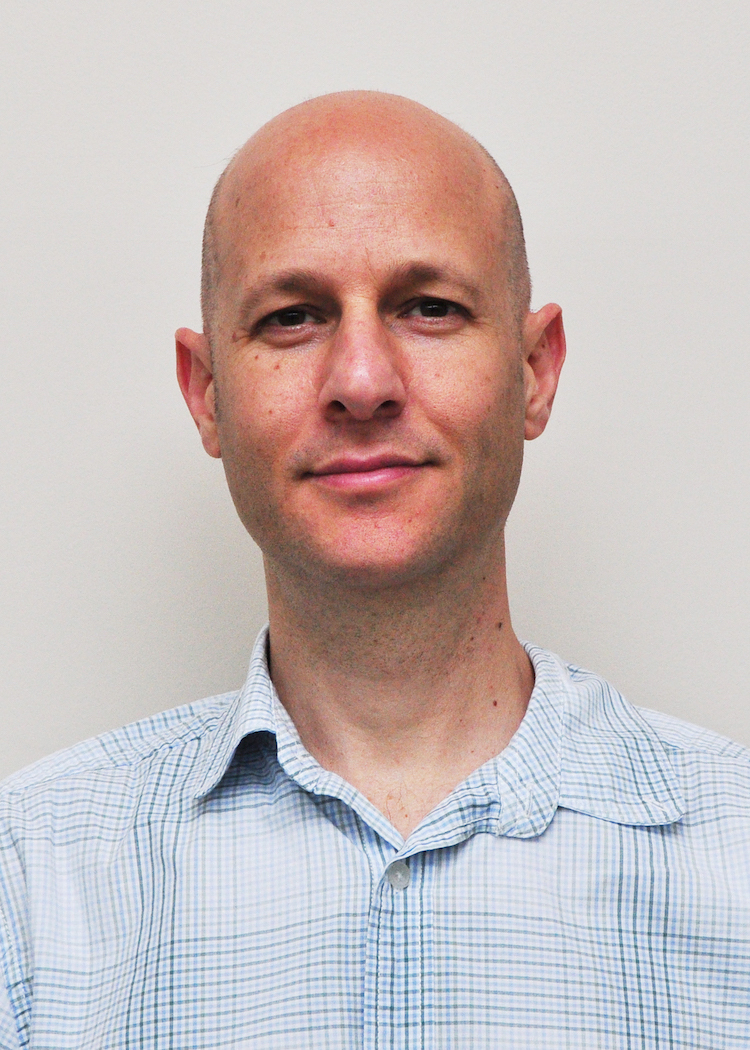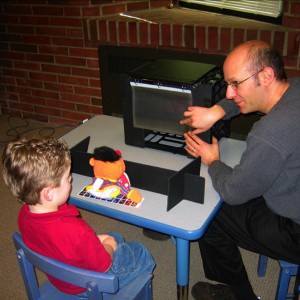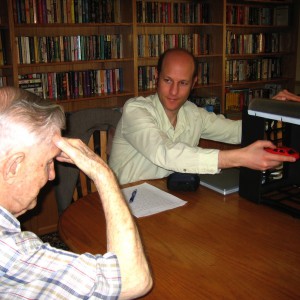When you get the chance to ask an educator and cognitive psychologist like Dan Bernstein a bunch of questions about his work, it's hard to limit yourself to just a few. Dr. Daniel Bernstein is an instructor in the Psychology department at Kwantlen Polytechnic University and works in the Life Span Cognition Lab. As a cognitive psychologist, Dr. Bernstein’s work focuses on memory & decision making—most notably false memory, fluency, the revelation effect, hindsight bias, Theory of Mind & lifespan cognitive development. Have you ever been curious about Cognitive Psychology and how it differs from other types of Psychology? Well, Dan can explain...

What is Cognitive Psychology? What other kinds of psychology are there?
Dan: cognitive psychology is the study of mental function, including how we learn, think, use language, perceive, attend, remember and make decisions. There are many additional types of psychology. Here are just a few: developmental psychology (the study of human development across the lifespan); clinical psychology (the study of abnormal human behaviour); biological psychology (the study of biological processes underlying human behavior); and social psychology (the study of human interaction).
What was your path to studying cognitive psychology?
Dan: Circuitous. My interest in psychology began with the study of sleep and dreams. After devoting my undergraduate and masters degrees to sleep and dreams (literally and figuratively), I became convinced of two things: (1) the importance of studying sleep and dreams; (2) the difficulty of obtaining an academic job with a specialization in sleep and dreams. The latter realization made me reconsider my path in psychology. While completing my undergraduate and masters degrees, I had taken courses in several of the major subfields of psychology, including cognitive psychology. My instructors in Introduction to Cognitive Psychology were the future Nobel Laureate, Daniel Kahneman and his partner, Anne Treisman, two greats in cognitive psychology. I wish I could say that I was hooked and smitten by cognitive psychology at this stage of my studies, but I wasn’t. It was during my Ph.D. that I took to cognitive psychology. The more I studied, the more I appreciated the value of this branch of psychology.
In the past, you’ve studied many things like memory, false memory and hindsight bias. What is hindsight bias?
Dan: On March 31, 2009, six Italian scientists and a former government official met in the city of L’Aquila to discuss the possibility of a major earthquake in the region. Despite several recent nearby tremors, the group concluded that it was impossible to predict a major earthquake. Six days later, a 6.3 magnitude quake rocked the ancient city, killing 300 people. On October 22, 2012, an Italian court sentenced these individuals to six years in jail for manslaughter, and ordered them to pay 7.8 million euros in damages (The Telegraph, 2012). The Italian court assumed that the group knew enough to predict a major earthquake. Hindsight bias is the tendency to overestimate one’s own or another person’s knowledge once the outcome is known. Steve Jobs put it nicely in his 2005 Stanford University Commencement Address: “You can’t connect the dots looking forward; you can only connect them looking backward.”
The Cognition Lab is currently focused on perspective-taking. Can you explain what it means to take someone else’s perspective?
Dan: If we return to the example of the Italian court failing to appreciate just how hard it is to predict major earthquakes, we can see how the court failed to take the naïve perspective of the group of scientists and former government official. Taking someone else’s perspective requires that we ignore what we know, feel or perceive to determine what someone else knows, feels or perceives. Perspective taking allows us to communicate with others who know more or less than we know, who feel differently from how we feel, or who see or hear things that we can’t see or hear. Unfortunately, our own knowledge and feelings often limit our ability to take another’s perspective. Our own knowledge can also limit our ability to recognize our own prior ignorance. We often think we “knew it all along” when, in fact, we just learned it!
How can you determine or measure if someone is taking on another’s perspective?
Dan: You can try simply asking someone what another person knows, but people aren’t very good at telling you what they themselves know, let alone what someone else knows. So, we use subtler measures to answer this question. For example, we might ask a participant to indicate what another person sees when that other person sees something different from what the participant sees. Can the participant ignore what s/he sees to estimate what the other person sees?
In another game, we hide toys behind a series of filter screens and ask participants to identify the toys as we remove the filter screens. Eventually the toys can be seen clearly, but initially, they cannot be seen behind the filter screens. Next, we show participants the toys before hiding the toys behind the filter screens. We then ask participants to say when a same-age peer who hasn’t seen the toy will identify the toys as we remove the filter screens. This game allows us to measure how well people can ignore what they know (about the toys’ identity) to take the naïve perspective of another person.


You study these behaviours in children and adults. How could a prospective participant get involved?
We welcome participants between the ages of 3 and 99 years. Please contact us at [email protected] or call 604-599-2162. Parents of children, and adult participants receive $25 (children receive a gift, too).
To learn more about Dr Dan Bernstein's work, you can visit the Lifespan Cognitive Lab website. KPU and Science World work together to bring fascinating science lectures to the dome for free! Take a look at the KPU Lecture series schedule and don't miss the next talk: The Inspiration of Bees.